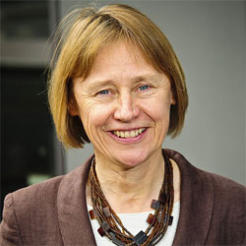HMRC and the National Audit Office yesterday both claimed charity sector support for their opposing views on whether charitable donations have risen as a result of gift aid.
At a hearing of the Public Accounts Committee on the findings of the NAO’s recent report into the value for money of gift aid, HMRC said the sector agreed that gift aid had boosted philanthropy, while the NAO claimed that the charities it had consulted agreed there was no firm evidence of this.
The Committee’s chair, Margaret Hodge MP, told HMRC’s chief executive Lin Homer (pictured) and director of counter-avoidance David Richardson that the report showed that the link between gift aid and higher donations was “at best unproven; at worst giving to charity has actually fallen”.
This kicked off the bickering between Homer and Robert Prideaux, director at the National Audit Office, over whether the charity sector agrees that donations have risen over the 13 years since gift aid was introduced.
Homer said that in 1999, the year before gift aid replaced the deed of covenant as an individual’s instrument for claiming tax relief on donations, a total of £590m was given to charity by individuals. By last year, this had climbed to £1.04bn, a rise of around 75 per cent, she said.
“We and the sector are very clear that donations have gone up, that gift aid has had a very positive effect on individual donations,” she said.
But Prideaux disagreed. He said the NAO consulted the sector for its report and found “no clear evidence that donations in the round are increasing”.
“They are in absolute terms, but this might be down to demographics and population changes,” he said. “We have not said in the report that donations aren’t increasing, but there is no clear evidence that they are increasing, and the charitable sector will back this up.”
Margaret Hodge was also unconvinced, telling Homer: “You have yet to prove that this radical change in 2000 was value for money for the £1bn that has gone to corporations and high net worth individuals as a bribe to encourage them to do more.”
David Richardson, head of counter-avoidance at HMRC, admitted that HMRC did not have detailed information on the tax reliefs claimed by companies, but added there was no evidence to suggest a serious problem with corporations taking advantage of gift aid on corporate donations, as about half the gift aid claimed by companies was claimed by the trading subsidiaries of charities.
Homer said HMRC accepted that more needed to be done to collect and analyse relevant data to prove the value-for-money proposition, but did not accept the premise that gift aid has not served to boost giving.
Homer said: “I think this tax relief has proven to be value for money for the charities. It’s a good technique that works well.”
Hodge asked the HMRC executives to name the ten charities that benefit most from gift aid, but Richardson said he didn’t have that information to hand and wouldn’t name names anyway.
Hodge suggested that HMRC should know who these are so that when they see a large claim from an unknown charity, such as the Cup Trust, they would immediately be suspicious.
Homer said HMRC had received gift aid claims from eight marketed tax-avoidance schemes that it did not believe were valid, involving 1,800 individual claimants and £240m. It had not paid out on any of them, and did not expect to do so, she said.
She admitted that in the past the Revenue had been “slightly on the shy side of talking about cases that concern us” and that it had new communications plans in place to publicise criminal activity and hopefully deter others.
Richardson added that a consultation was under way on new powers to issue fines to people that submitted claims that did not succeed.









